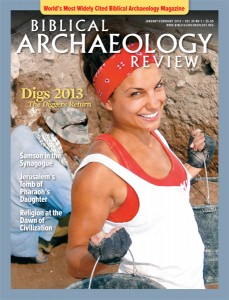Strata: Site of Samaritan Temple Open to Public
When the Israelites entered the Promised Land, the blessings of the Lord were recited on Mt. Gerizim in Samaria (the curses were recited on the twin peak of Mt. Ebal; Deuteronomy 11:29–30, 27:11–14). This past summer was cause for celebration once again on Mt. Gerizim as Israeli officials reopened the archaeological site to the public for the first time in 12 years (it had been closed in 2000 due to security concerns at the start of the second intifada).
Visitors to the archaeological park will now be able to explore the magnificent results of more than a quarter century of excavations on Mt. Gerizim, directed by Yitzhak Magen, the head archaeological officer for the civil administration of Judea and Samaria. As Magen reported recently to BAR readers, the excavations uncovered several phases of occupation from the Persian period through the Byzantine period, including conclusive evidence of a Samaritan temple built in the fifth century B.C.E.a The Samaritans, who broke off from mainstream Judaism in the Persian period, consider Mt. Gerizim to be the holy mountain for their worship of YHWH (reflected in the Samaritan Pentateuch), rather than the Temple Mount in Jerusalem.
Magen and his excavation team revealed the fifth-century B.C.E. sacred precinct, more than 400,000 bones of sacrificial animals, several inscriptions mentioning YHWH or “the one God,” and small finds of gold and precious metal that may have been used for ritual purposes in the temple.
Already a library member? Log in here.
Institution user? Log in with your IP address.

